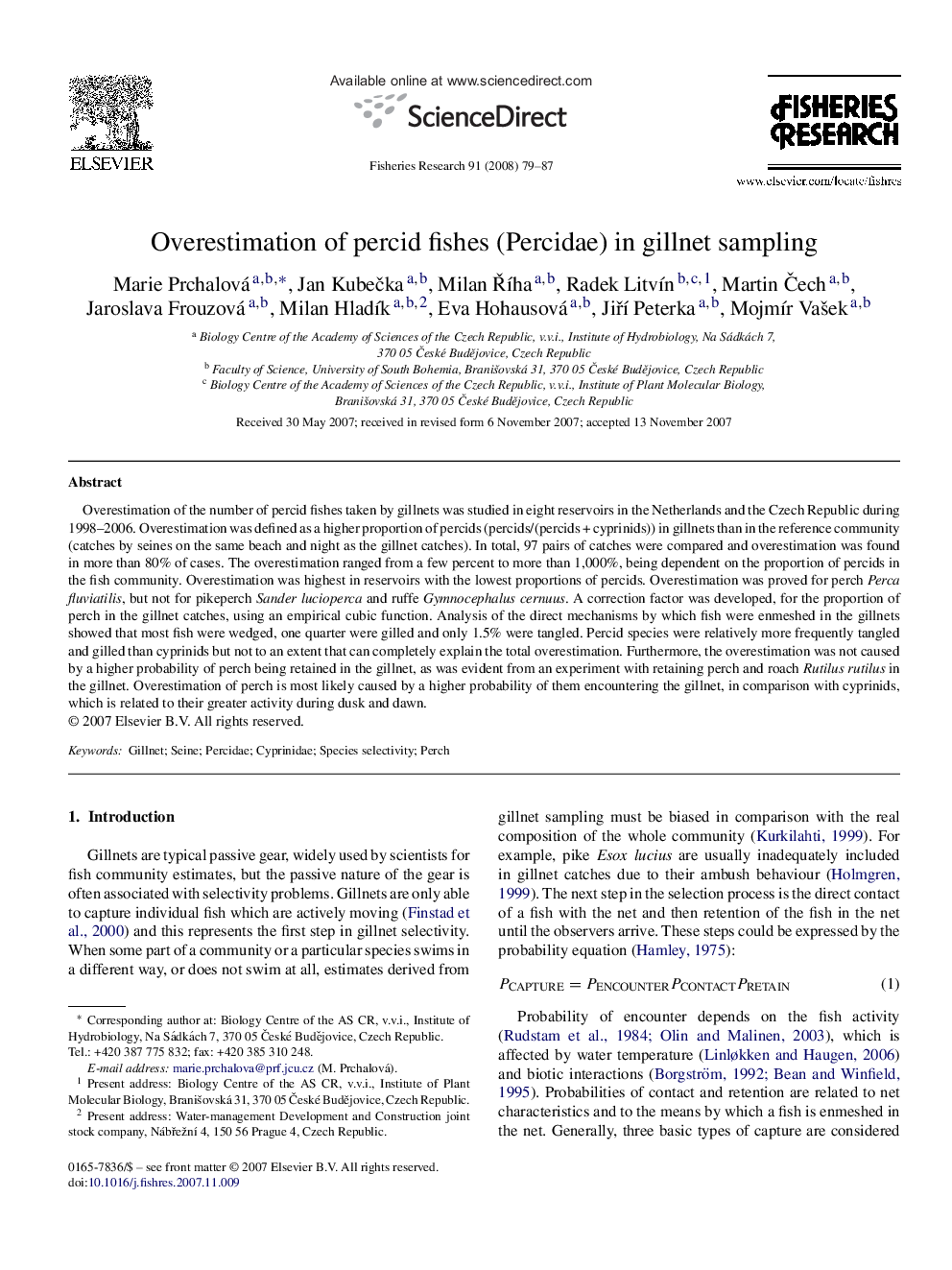| Article ID | Journal | Published Year | Pages | File Type |
|---|---|---|---|---|
| 4544413 | Fisheries Research | 2008 | 9 Pages |
Overestimation of the number of percid fishes taken by gillnets was studied in eight reservoirs in the Netherlands and the Czech Republic during 1998–2006. Overestimation was defined as a higher proportion of percids (percids/(percids + cyprinids)) in gillnets than in the reference community (catches by seines on the same beach and night as the gillnet catches). In total, 97 pairs of catches were compared and overestimation was found in more than 80% of cases. The overestimation ranged from a few percent to more than 1,000%, being dependent on the proportion of percids in the fish community. Overestimation was highest in reservoirs with the lowest proportions of percids. Overestimation was proved for perch Perca fluviatilis, but not for pikeperch Sander lucioperca and ruffe Gymnocephalus cernuus. A correction factor was developed, for the proportion of perch in the gillnet catches, using an empirical cubic function. Analysis of the direct mechanisms by which fish were enmeshed in the gillnets showed that most fish were wedged, one quarter were gilled and only 1.5% were tangled. Percid species were relatively more frequently tangled and gilled than cyprinids but not to an extent that can completely explain the total overestimation. Furthermore, the overestimation was not caused by a higher probability of perch being retained in the gillnet, as was evident from an experiment with retaining perch and roach Rutilus rutilus in the gillnet. Overestimation of perch is most likely caused by a higher probability of them encountering the gillnet, in comparison with cyprinids, which is related to their greater activity during dusk and dawn.
